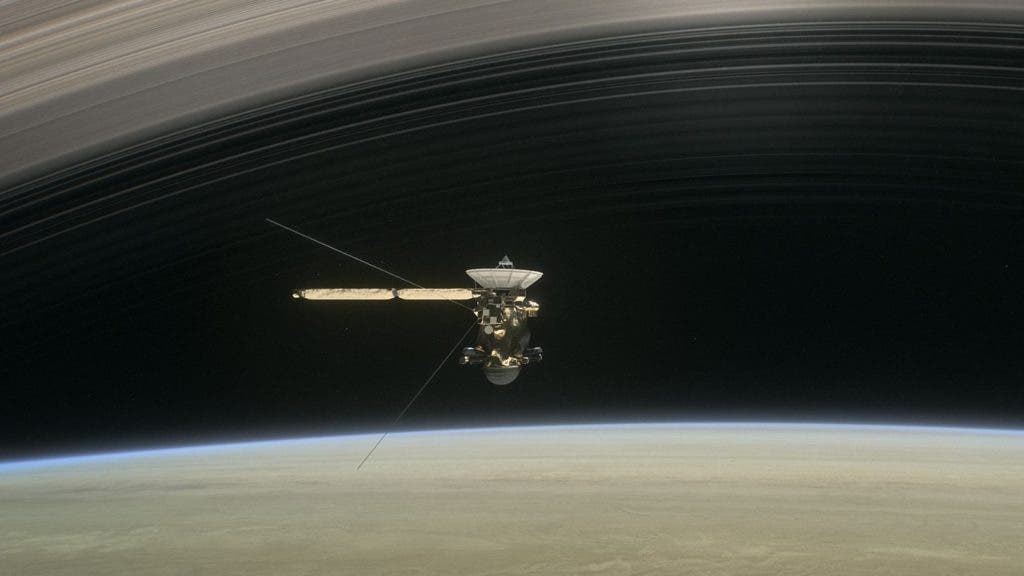Today, May 2nd, a spacecraft that has been orbiting Saturn since 2004 is preparing to embark on its grand finale: a series of trips that will see Cassini zip through the planet’s rings. A week earlier, however, the spacecraft dived through a previously unexplored area between Saturn and its innermost ring. As it dived, it listened for any signs of particles, like dust, that might hit its sensitive antenna. Cassini recorded the sound of ’emptiness’ and this was totally unexpected for everyone involved.
“The region between the rings and Saturn is ‘the big empty,’ apparently,” said Cassini Project Manager Earl Maize of NASA’s Jet Propulsion Laboratory, in a statement to the press. “Cassini will stay the course, while the scientists work on the mystery of why the dust level is much lower than expected.”
The dive from April 26 did record ‘something’. The spacecraft is equipped with a highly sensitive device called the Radio and Plasma Wave Science instrument which picks up radio and plasma waves around Saturn. Dust that hits the antenna is also recorded although not directly acoustically like in the case of a microphone. Be them charged particles or chunks of dust, these signals are ultimately converted to an audio format, where the peaks in the signal correspond to pops and cracks. See how different it sounded when Casini passed through a faint, dusty ring on Dec. 18, 2016: Tom Yulsman wrote for Discover that the “pops and cracks toward the middle is the sound of a very dusty environment.”
“It was a bit disorienting — we weren’t hearing what we expected to hear,” William Kurth, RPWS team lead at the University of Iowa, said in a statement. “I’ve listened to our data from the first dive several times and I can probably count on my hands the number of dust particle impacts I hear.”
So, even though the gap between Saturn and its rings is just 1,200 miles (2,000 kilometers) wide and despite NASA images of ice and rock particles, this region is surprisingly empty.
After today’s dive, Cassini is scheduled to make no more than two dozen orbits around Saturn. Each time, it will dive through some of Saturn’s rings until ultimately crashing into the planet’s atmosphere during the grand finale on September 15.










